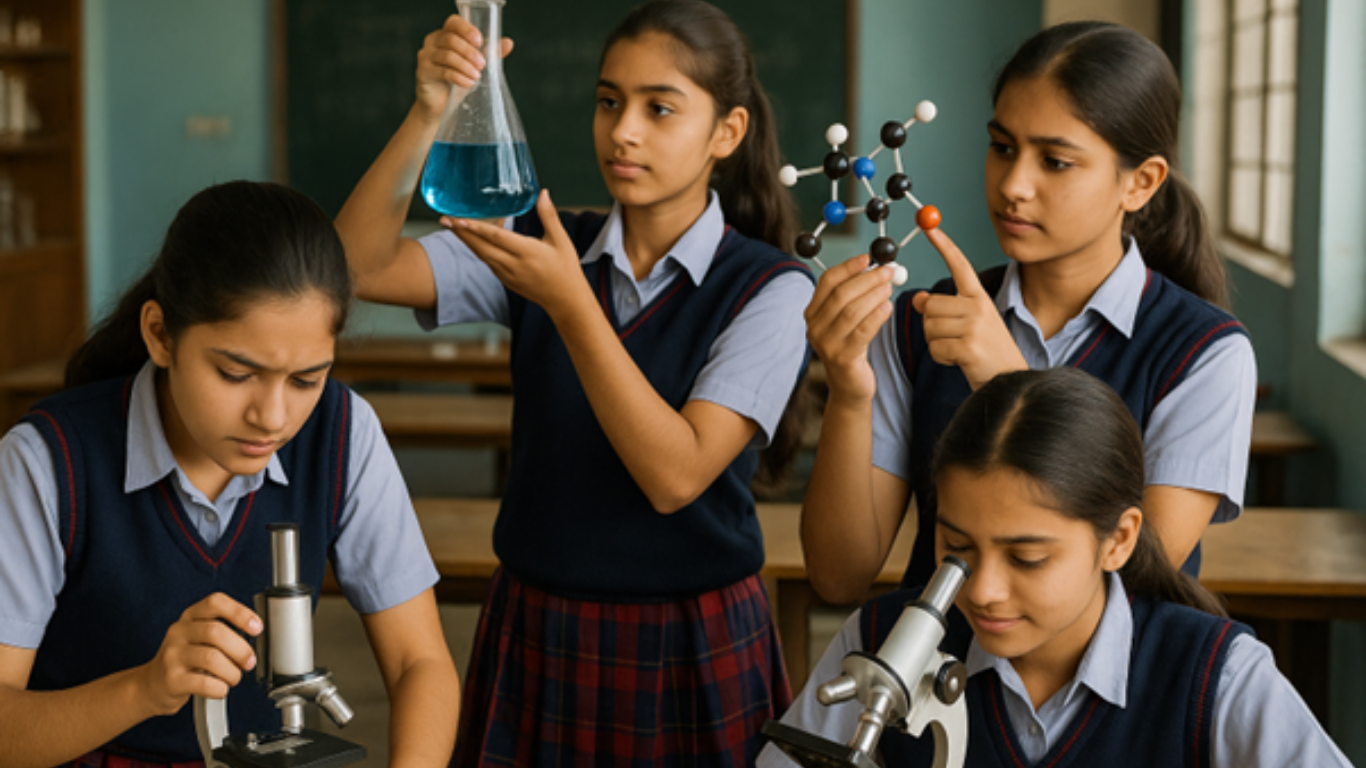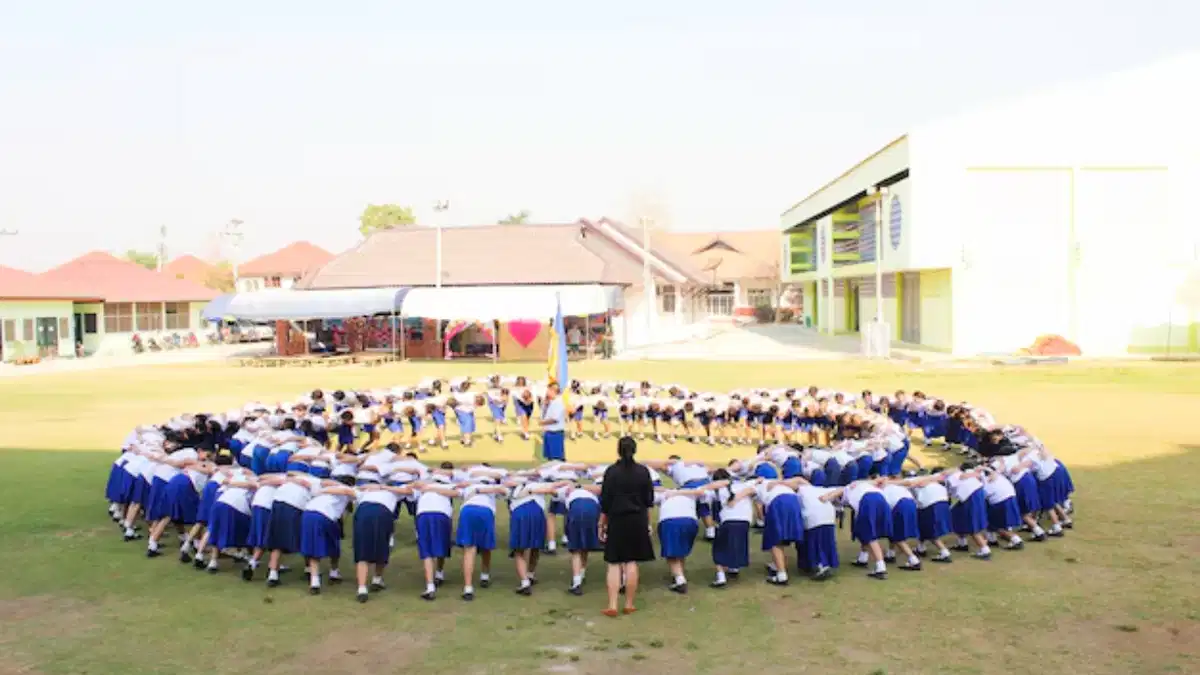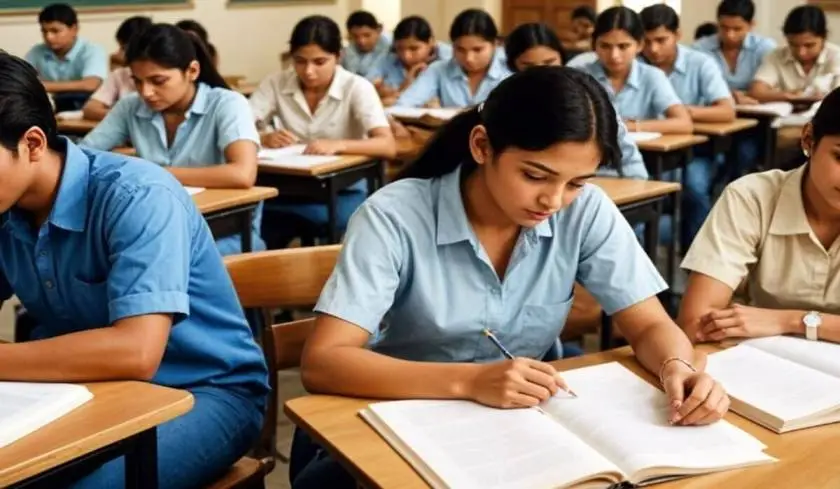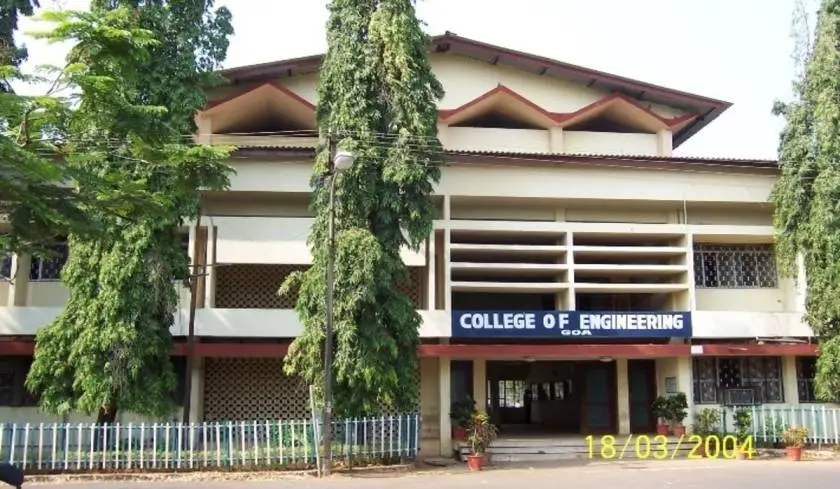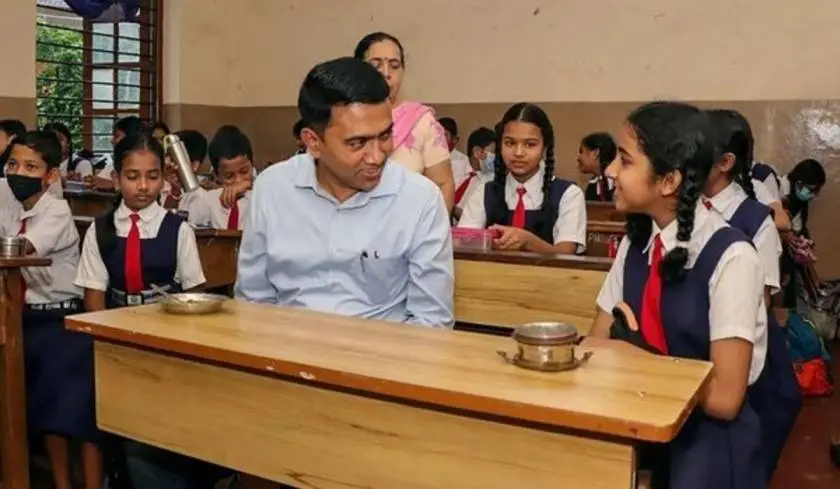Despite leading in board exam scores, girls in Punjab are missing out on careers in STEM, a gap that could cost the state dearly in the years ahead.
Punjab has a problem hiding in plain sight. Even though girls in the state score better than boys in board exams, they are missing from the one place India needs them most,the Science classroom.
A recent study shows that just 16% of girls in Punjab have taken the Science stream in Classes 11 and 12. This is the lowest among four states surveyed, far behind Madhya Pradesh (59%), Jharkhand (29%), and Rajasthan (20%).
The report, called Unlocking Potential: Financial Aid as a Catalyst for Girls’ STEM Success, was carried out by Sattva Knowledge Institute and AISECT. It covered 4,763 girls across 37 districts in India. In Punjab, the survey included schools in Ludhiana, Amritsar, Moga, and Sangrur.
Top Marks, But Few Science Choices
Girls in Punjab are doing well in exams. But when it comes to choosing Science, most turn away. The reasons are not about ability but about money, access, and support.The study found that most girls in rural Punjab do not have a smartphone or laptop. Many homes do not have Internet. Even if Science is offered in school, there are often no female Science teachers. Out of the schools surveyed, only 19% had women teaching Science.Students often look for role models when choosing a career. Without teachers they can relate to, many girls don’t picture themselves in Science jobs.
Money Becomes a Wall
One of the biggest problems is cost. In villages, studying Science is 58.5% more expensive than Humanities. In cities, it costs 139% more. That includes coaching, travel, books, lab fees, and devices. These are out of reach for many families.
Among the girls surveyed, 69% of the students said they didn’t take science due to financial reasons while 63% said they didn’t have digital access. 1 in every 3 girls surveyed said that they couldn’t afford coaching. Another shocking fact was that only 10% of them knew about scholarships that could help. These numbers show that even bright students are turning away from Science because their families can’t afford it.
The Scholarship System Isn’t Working

India has several scholarship schemes for students. The system however isn’t working well for girls in Punjab. Many of the scholarships are only for students with top marks, and they often require online applications in English. This leaves out many rural girls who don’t have digital access or support.Even when girls apply, they don’t always get the money on time. Most scholarships only cover fees, not coaching, transport, or devices which are often the real cost barriers.
Who are these girls?
The study grouped the girls into four categories based on their performance and needs:
-
Trailblazers – They are smart and motivated, but too poor to afford Science. With 81,000–1,03,000 a year, they can crack competitive exams and get into top colleges.
-
Aspirers – These girls need more than just money. They struggle with subjects and need basic Science coaching and soft skills training.
-
Sustainers – They are doing well and don’t need much help. A smaller amount (22,000–45,000) could keep them in Science.
-
Disengaged – They don’t perform well, and they don’t ask for support. They need awareness, mentoring, and local outreach.
Each group shows a different kind of challenge. One program cannot work for all of them.
Mentoring: A Missing Link
Mentoring helps students make decisions and stay motivated. In Punjab, this support is mostly missing. Only 28% of girls in the state said they needed mentoring. In Madhya Pradesh, the number was 50%.Experts say the lower percentage in Punjab doesn’t mean girls don’t want mentoring, it means they don’t even know it exists.
What’s Working in Madhya Pradesh
In Madhya Pradesh, something is clearly clicking when it comes to getting girls into Science. More schools in the state are offering Science as a stream, even in smaller towns and rural blocks. That’s giving students more options closeto home. Another major plus is the higher number of women teaching Science.
Having a female teacher in the lab or classroom can be a powerful influence. It gives young girls someone to look up to, someone who shows them that a future in Science is not out of reach.
The state has also made it easier for students to get financial help. Scholarships here are not just available, but are actually reaching the students who need them. And career mentoring doesn’t come as an afterthought. It begins early, usually around Class 9, so students have the time and support to make informed decisions about their futures.
Because of all this, nearly six out of every ten girls in Madhya Pradesh are choosing Science after Class 10. That’s a figure that puts the state far ahead of others and it didn’t happen by chance.
Where Punjab Can Step Up
Punjab, despite its strong academic history, is falling behind when it comes to girls choosing Science in higher secondary school. The situation isn’t beyond repair. There are clear, practical steps the state can take. First, it needs to bring more female Science teachers into classrooms. Girls are more likely to pursue a subject when they see someone they can relate to standing at the front of the room.
Punjab also needs to bring coaching support into the school system. Right now, many students have no option but to pay for private tuition, which simply isn’t possible for families with limited income.
Another major step would be to make digital access a priority. Without the Internet or basic devices, students can’t keep up with online classes, exam prep, or scholarship forms.
Punjab should simplify how scholarships are offered and applied for. Forms need to be available offline and in local languages, and the focus should shift from top scores to real need. Many students who could do well in Science just don’t get the chance because their families can’t afford the extra costs.
What’s needed is a fairer system. A system that doesn’t ask “who scored the highest?” but instead asks “who needs the support the most?”
Punjab already has the students. They lack the system to help them succeed in Science and in life beyond the classroom.
Future Jobs Need STEM Skills
India is moving fast toward a tech-based economy. According to the National Science Foundation, 80% of future jobs will need STEM (Science, Technology, Engineering, Mathematics) skills. But only 14.8% of India’s STEM workforce is female, compared to 28% globally (NSS 2022).
If this trend continues, India will miss out on talent. Punjab, in particular, will fall behind in preparing its girls for the world that’s coming.
One Girl, One Story
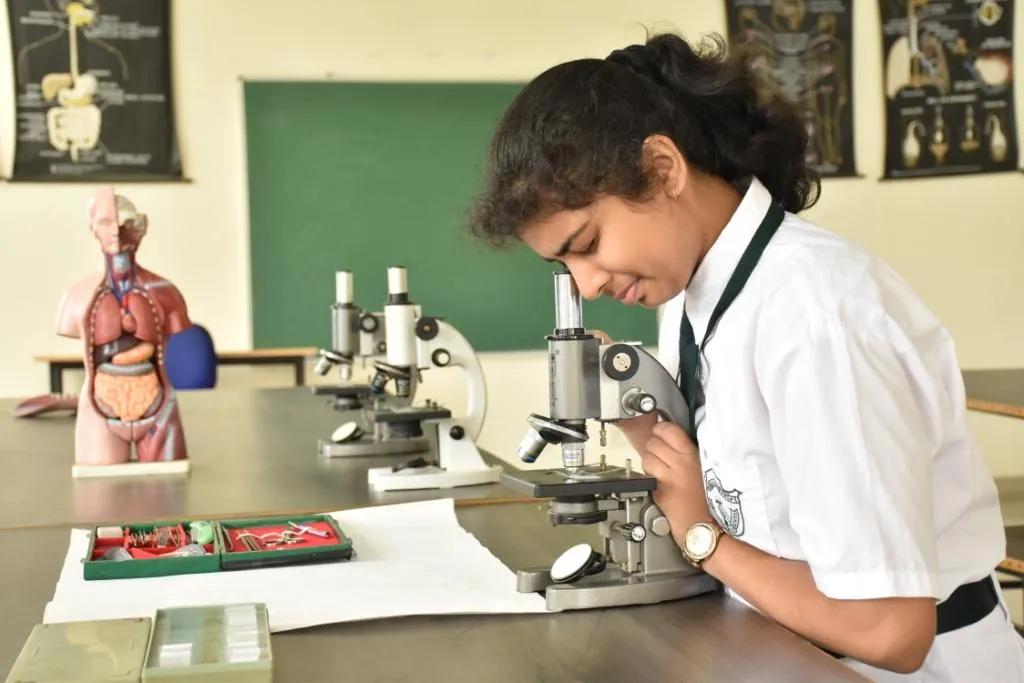
The report gives real stories behind the numbers. Some girls who scored above 90% in Class 10 chose Arts because their families couldn’t afford coaching. Others dropped out because they didn’t have a smartphone.In most homes, if there’s one phone or limited money, the boy gets it. The girl waits, or gives up.
What Needs to Be Done
The report offers clear steps. The scholarships should cover not just school fees but also coaching, books, devices and travel expenses. The mentoring should start early from class 9 or 10. Device distribution can be done in rural schools. Additionally, internet access should be made available in remote areas.
The schools also need to recruit more female teachers in the science stream. Real time data tracking should be available in schools.
The scholarships should be made more flexible. These scholarships should not only cover meritorious students but also those who actually need it. Working with companies to hire more women in tech fields is also important.
It’s Not Just About Equality
The report closes with a powerful idea. This is not just about fairness. It’s about building India’s future. Every girl who misses out on Science is a missed opportunity for innovation, leadership, and change.
“Helping girls enter Science is not just a policy goal,” said Dr. Shweta Gaur of Sattva Consulting. “It’s a long-term investment. A girl in rural Punjab could one day lead in biotech or space science, if she’s given the chance.”



